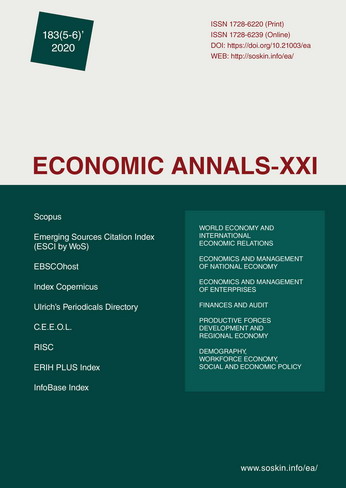Cryptoassets as an emerging class of digital assets in the financial accounting
Cryptoassets as an emerging class of digital assets in the financial accounting
Author(s): Tetiana Yatsyk, Viktor ShvetsSubject(s): Economy, Financial Markets, ICT Information and Communications Technologies
Published by: Institute of Society Transformation
Keywords: Cryptoassets; Distributed Ledger Technology (DLT); Cryptocurrency Financial Accounting; Intangible Asset; Digital Token; Initial Coin Offering (ICO);
Summary/Abstract: Introduction. Currently, there is no single, unified framework for the classification of cryptoassets. Consequently, there is no generally applied definition of neither cryptoassets, nor digital tokens, due to the variety of features and bespoke nature of the transactions in practice. The objective of this paper is to define the essence of cryptoassets in the financial accounting, identify attributes for its taxonomy and provide a multipurpose overview of cryptoassets market environment. Methods. In a comprehensive overview of cryptoassets market environment, the authors have used statistical monitoring, as well as dynamic, comparative and structural analysis. The selected sample includes daily data of cryptoassets market capitalization. Data were gathered from multiple sources at various time points during February 2016 - July 2020. Results. According to the conducted research, the countries with the largest number of registered cryptoassets exchanges are: the UK, Hong Kong, Singapore and the US, however, about 17% of exchanges still stay with unknown countries of registration. It is expected that the number of such exchanges will reduce soon, due to the adoption of certain legislative frameworks regarding cryptoassets. The authors define the essence of such terms as: cryptoassets, cryptocurrency, digital tokens and propose a cryptoassets taxonomy, based on the token’s functionality and characteristics. Four main types of cryptoassets have been identified and defined, namely: cryptocurrency (payment tokens), security tokens, utility tokens, asset-backed tokens and hybrid (or mixed) tokens. The authors suggest possible financial accounting treatment for each type of the cryptoassets. Conclusions. The cryptoassets market capitalization reacted to the factors such as global financial fluctuations due to macroeconomic factors and the COVID-19 pandemic as well as increasing digital asset regulations in early 2020. Cryptoassets remain largely a self-regulated industry and they still have no legal definition. The authors define cryptoassets as transferable digital assets recorded with a distributed ledger technology, which prohibits their copying or duplication. Due to the plethora amount of types of cryptoassets, a case-specific review should be required to determine the corresponding financial accounting treatment. The methodology of cryptoassets accounting treatment require further research.
Journal: Економічний часопис - ХХІ
- Issue Year: 183/2020
- Issue No: 5-6
- Page Range: 106-115
- Page Count: 10
- Language: English

